AI in Manufacturing: Market Predictions and Future Insights for 2024-2033
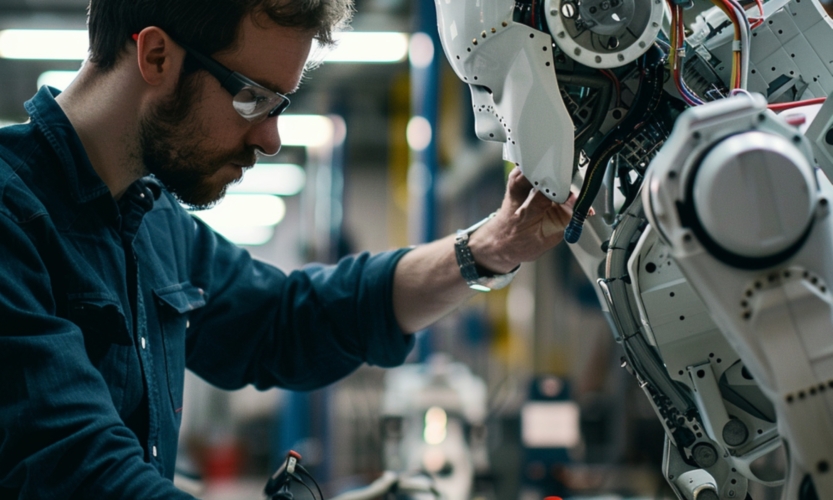
The Global Artificial Intelligence (AI) Market size is expected to reach USD 259.1 billion by 2024 and is further anticipated to reach USD 4,726.6 billion by 2033 according to Dimension Market Research. The market is anticipated to register a CAGR of 38.1% from 2024 to 2033. As Wall Street debates whether global artificial intelligence is just another bubble and questions its profitability, the AI-driven transformation of manufacturing processes is already delivering tangible and positive results.
- Introduction
- Market Overview and Growth Projections
- Predictive Maintenance: Enhancing Equipment Reliability and Reducing Costs
- AI and Quality Control: Greater Precision and Efficiency
- Robotics and AI: Advancing Automation and Flexibility
- Supply Chain Optimization: AI’s Impact on Efficiency and Resilience
- Sustainability in Manufacturing: AI’s Role in Green Practices
- Conclusion: The Future of AI in Manufacturing
- About the Author
- Sources
Introduction
AI is emerging as a cornerstone of modern manufacturing, driving a profound transformation in the sector. The global AI in manufacturing market is experiencing unprecedented growth, with projections indicating an increase from USD 2.6 billion in 2022 to USD 20.8 billion by 2028, representing a robust compound annual growth rate (CAGR) of 45.6%. This explosive growth reflects the accelerating adoption of AI technologies, including machine learning, computer vision, robotics, and natural language processing, in manufacturing processes.
The integration of AI in manufacturing is set to revolutionize the industry by enhancing operational efficiency, improving product quality, enabling customization, and driving sustainable practices. As AI technology continues to evolve, its impact on the manufacturing sector is expected to deepen, offering new opportunities and presenting challenges that companies must navigate.
This article delves into the current developments and future projections of AI in manufacturing, providing an analytical overview of market trends and statistical data to illustrate how AI is reshaping the industry.
Market Overview and Growth Projections
The AI in manufacturing market is poised for significant expansion. According to market research, the sector was valued at approximately USD 2.6 billion in 2022. By 2028, this market is projected to reach USD 20.8 billion, reflecting a CAGR of 45.6% from 2022 to 2028.
This rapid growth underscores the increasing investment in AI technologies by manufacturers seeking to enhance their operations. The manufacturing sector is leading the charge in digital transformation, utilizing advanced technologies such as big data analytics, AI, and robotics. The impact is evident, with McKinsey reporting that these innovations can decrease machine downtime by 30% to 50% and cut quality-related expenses by 10% to 20%, among other advantages.
Key Growth Drivers:
- Increased Operational Efficiency: AI technologies, such as predictive maintenance and process optimization, help manufacturers streamline their operations and reduce downtime.
- Enhanced Quality Control: AI-powered computer vision systems improve defect detection and ensure higher product quality.
- Customization and Flexibility: AI enables mass customization by adapting production lines to meet changing consumer demands.
- Supply Chain Optimization: AI enhances supply chain management by improving forecasting, inventory management, and logistics.
- Sustainability: AI supports green manufacturing practices by optimizing energy use and minimizing waste.
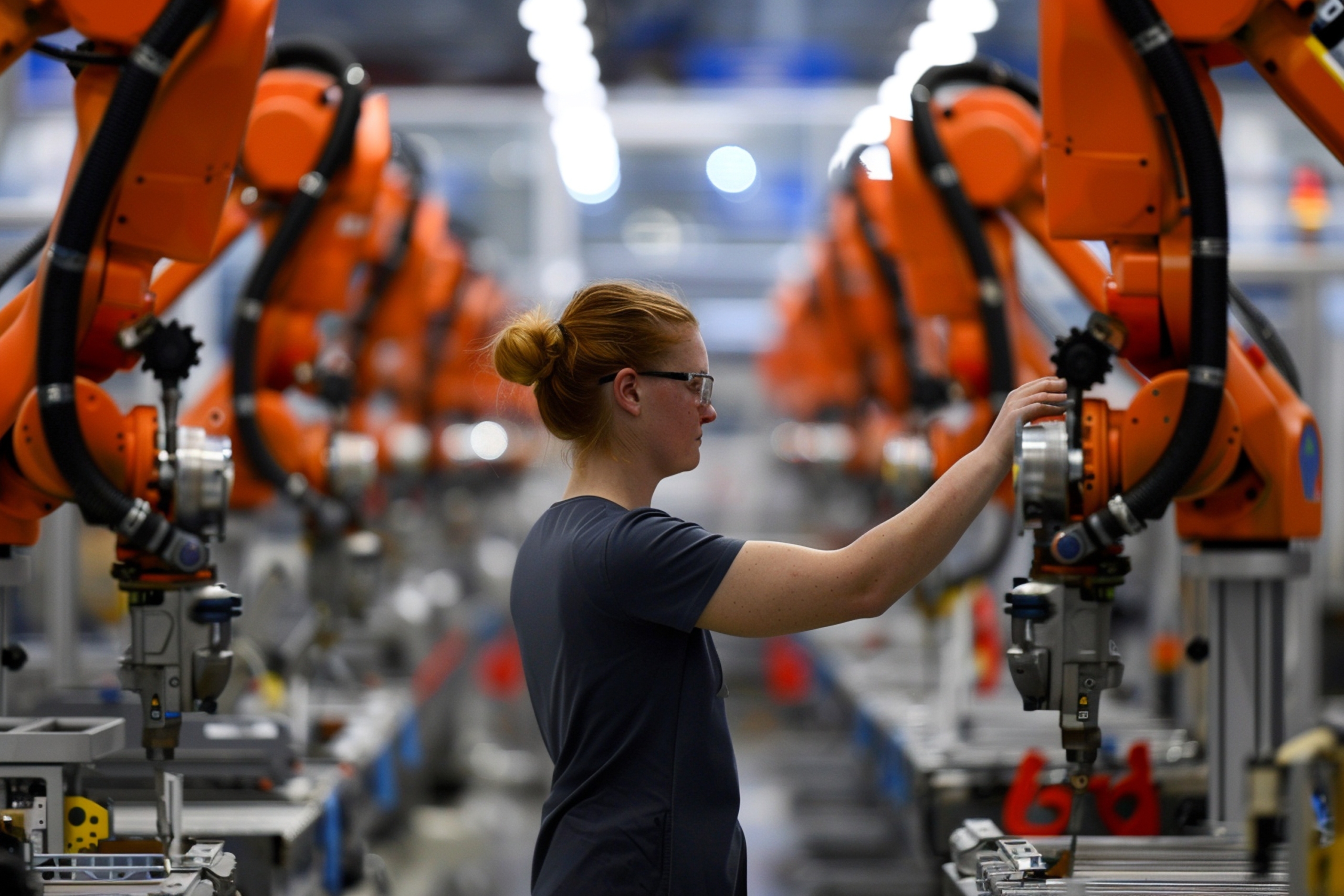
Predictive Maintenance: Enhancing Equipment Reliability and Reducing Costs
Predictive maintenance is a transformative application of AI in manufacturing. Traditional maintenance approaches – reactive and preventive – often result in either unexpected downtime or unnecessary repairs. AI-driven predictive maintenance addresses these issues by leveraging real-time data from sensors to predict equipment failures before they occur. AI-driven predictive maintenance is employed to monitor production lines and predict equipment failures. This proactive approach allows manufacturers to schedule maintenance activities during non-peak hours, minimizing disruptions and reducing maintenance costs.
Market Data:
- Cost Savings: According to McKinsey & Company, predictive maintenance powered by AI can cut maintenance costs by up to 10-15% and reduce machine downtime by up to 50%.
- Productivity Gains: A study by PwC indicates that predictive maintenance can lead to productivity gains of 12-15% in manufacturing operations.
Case Example: In the Food and Beverage industry, PepsiCo’s Frito-Lay, for instance, using Augury Inc. start-up’s AI-driven technology gained 4,000 additional hours of manufacturing capacity each year by reducing unplanned downtime and cutting costs at four of its plants through predictive maintenance technology.
Segment Insight: The global AI market in the food and beverage sector is projected to grow to $35.42 billion by 2028.
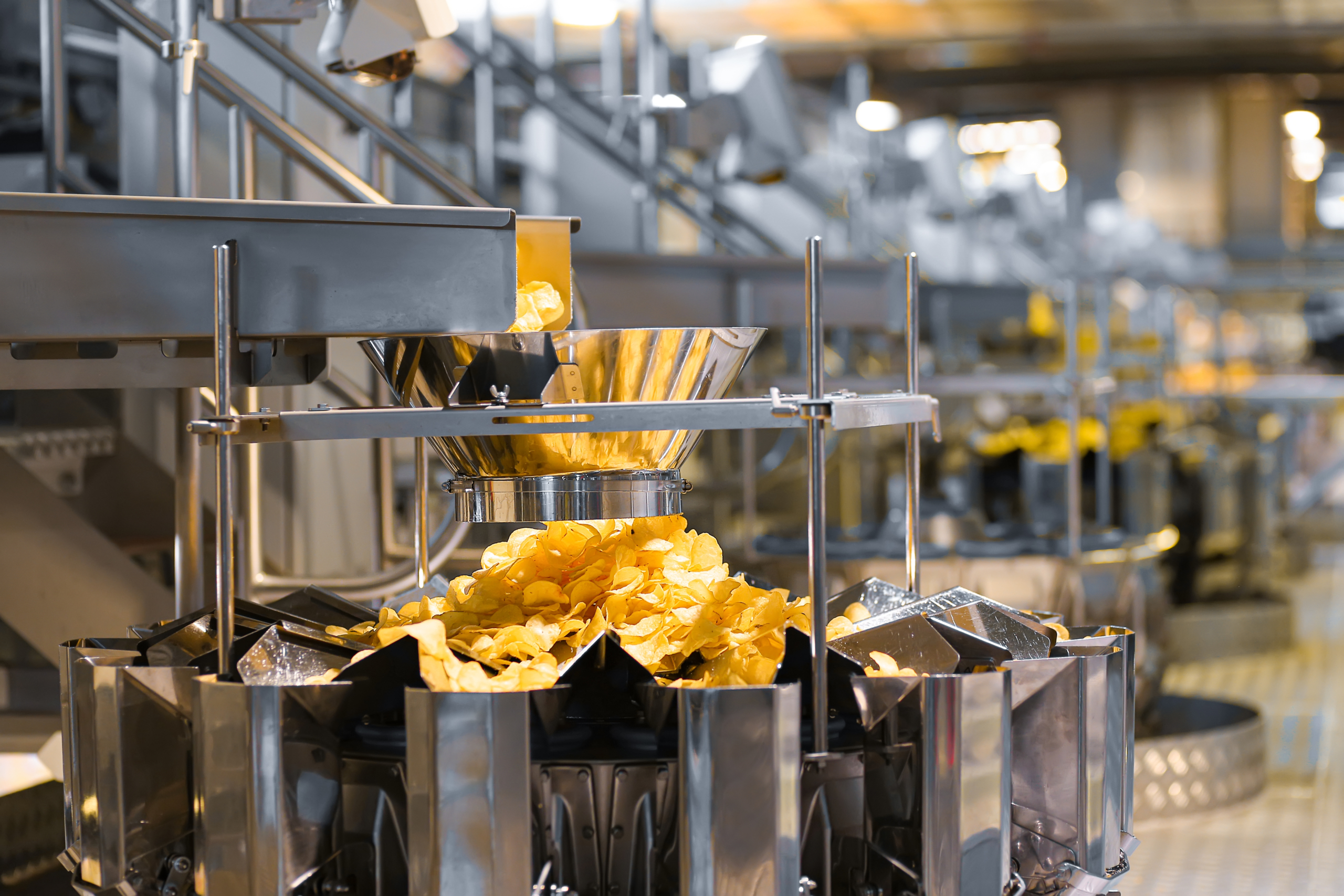
AI and Quality Control: Greater Precision and Efficiency
AI’s role in quality control is pivotal. Traditional quality inspection methods rely on human inspectors, which can be slow and inconsistent. Modern AI-powered computer vision systems can replace manual inspection, and offer high-speed, accurate defect detection.
Market Data:
- Defect Reduction: Capgemini’s study shows that AI-driven quality control systems can reduce defect rates by up to 90%, compared to 70–80% for human inspectors. Author’s vast experience in the quality control powered by AI – KSM Vision specializing in the production of optical vision inspection systems – indicates even higher detection accuracy – for KSM Vision, the inspection accuracy can reach 95-99%, compared to 80-90% in the case of manul inspection.
- Market Growth: The global market for AI-powered quality control in manufacturing is expected to grow from USD 1.4 billion in 2023 to USD 5.2 billion by 2030, with a CAGR of 20.8%.
Case Example: In wood processing, one of the leading global furniture producers, by implementing KSM Vision’s automated optical inspection in the wild wood lamella defect detection process, increased the quality control accuracy from 80-90% (manual inspection, rate depending on the process and shift with worse accuracy rates e.g. at night) to 95-99% (automated machine vision depending on the process). The integration of the KSM Vision automated machine vision system also resulted in reduction to zero (0) of the product returs from HF-press. The automated quality control system eliminated the need for operator positions on the production line, accelerating the return on investment (ROI) of the wood production automation.
Segment Insight: According to a report by Grand View Research, the global wood production market size was valued at USD 490.3 billion in 2020 and is expected to grow at a compound annual growth rate (CAGR) of 4.6% from 2021 to 2028. While global construction quality control services market achieved a valuation of USD 17.9 Billion in 2023 and is estimated to reach USD 36.59 Billion by 2031, demonstrating a CAGR of 10.75% from 2024 to 2031.
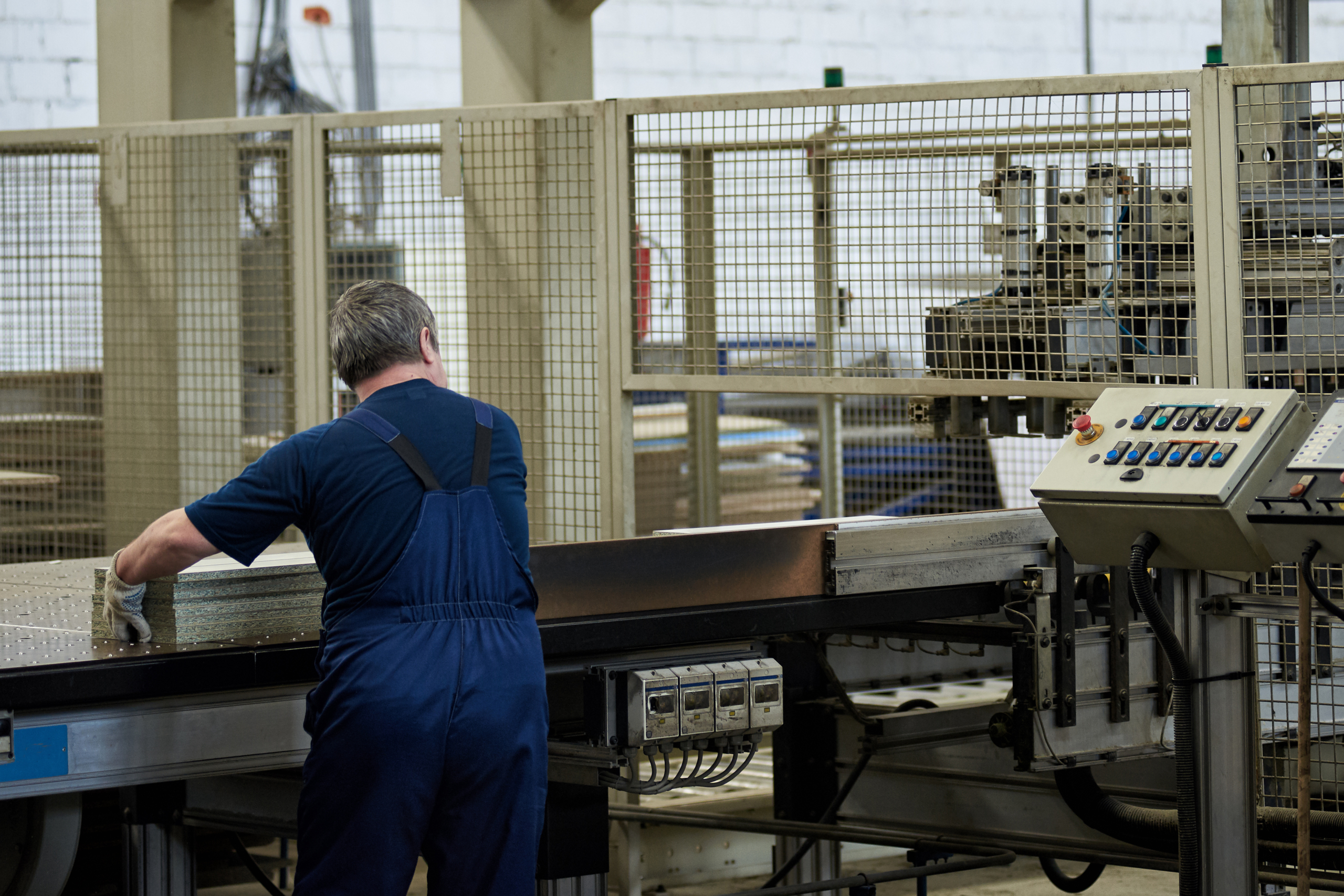
Robotics and AI: Advancing Automation and Flexibility
AI-powered robotics is transforming manufacturing by enabling robots to perform complex, adaptive tasks. Unlike traditional industrial robots, which are programmed for repetitive tasks, AI-driven intelligent machines can learn from their environment and adapt to new tasks. Collaborative robots – so called cobots – work alongside human operators, learning from their actions and enhancing production line flexibility. This capability is particularly beneficial for industries requiring customization and rapid adaptation to new product designs.
Market Data:
- Robotics Market Growth: The global market for AI-powered robotics in manufacturing is projected to reach USD 16.3 billion by 2030, growing at a CAGR of 33% from 2024 to 2030.
- Productivity Improvements: Deloitte’s report highlights that smart factories, powered by AI, could contribute between USD 1.5 trillion and USD 2.2 trillion to the global economy by 2025.
Case Example: In automotive market, Ford, for instance, utilizes cobots for welding, gluing, and quality control, including using six cobots to sand an entire car body in just 35 seconds. Meanwhile, BMW’s Spartanburg plant, responsible for 60% of BMWs sold in the U.S., employs AI-driven robots to save $1 million annually and optimize workforce deployment.
Segment Insight: The automotive AI market is expected to reach $7 billion by 2027, underscoring its position as a frontrunner in AI adoption within manufacturing.
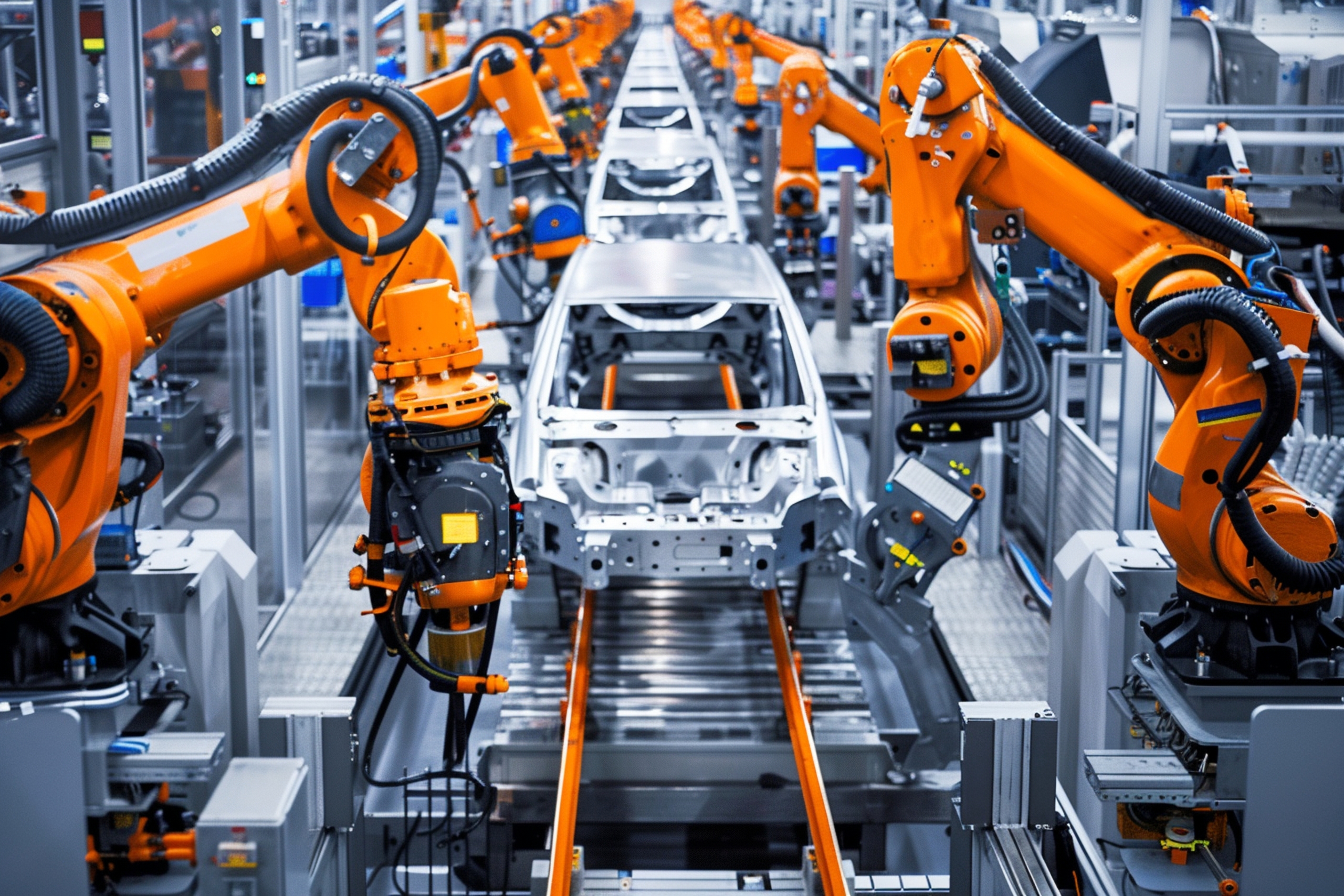
Supply Chain Optimization: AI’s Impact on Efficiency and Resilience
AI enhances supply chain management by providing insights into demand forecasting, inventory management, and logistics. AI algorithms analyze data from various sources to optimize supply chain operations and mitigate risks.
Market Data:
- Efficiency Gains: Accenture’s report indicates that AI-driven supply chain optimization can increase efficiency by 30% and reduce logistics costs by 10-15%.
- Real-Time Visibility: AI enables real-time tracking of materials and products, improving transparency and responsiveness in the supply chain.
Case Example: During the COVID-19 pandemic, companies with AI-powered supply chain systems were better equipped to handle disruptions by adjusting procurement and production plans in real time.
A perfect use-case is also presented by Pfizer, in the pharmaceutical manufacturing. Pfizer, using IBM’s supercomputing and AI, designed the Covid-19 drug Paxlovid in 4 months, reducing computational time by 80% to 90%.
AI is addressing drug discovery challenges in key areas like protein structure prediction, function forecasting, therapy design, but also drug quality control and robotization – at every stage.
Segment Insight: AI in drug development could lead to 50 new drugs and $50 billion in sales over the next decade, with over 80 companies driving this innovation.

Sustainability in Manufacturing: AI’s Role in Green Practices
AI contributes to sustainable manufacturing by optimizing energy use, reducing waste, and supporting circular economy practices. AI systems monitor and analyze energy consumption, material usage, and waste production to enhance sustainability.
Market Data:
- Energy Efficiency: The World Economic Forum estimates that AI-enabled manufacturing processes can reduce energy consumption by up to 20%.
- Waste Reduction: AI helps manufacturers optimize material usage, reducing waste and minimizing the environmental impact.
Case Example: In FMCG industry, global manufacturers start reporting escalating problem of human errors when changing product labels on the production line, especially the ones for export. The issue is mostly related with the rotation of production labor lacking related expertise of label legal requirements on foreign local markets and ever-changing markets’ regulations (e.g. required ingredients for a specific market, wrong language, etc.). The problem is significant because it ends with the returns or even disposals of entire containers – a huge waste of money, operational issue, and environmental waste. This affects sustainability goals of the global brands and adherence to zero-waste and eco-friendly regulations. The manual inspection of the product labels lead to human errors and potential downtimes whereas AI-powered automated inspection of labels minimizes these issues.

Conclusion: The Future of AI in Manufacturing
The integration of AI into manufacturing processes is transforming the industry, offering opportunities for increased efficiency, improved quality, and enhanced sustainability. As the market for AI in manufacturing continues to grow, driven by a CAGR of 45.6% until 2028, companies must adapt to leverage these advancements effectively.
AI technologies such as predictive maintenance, quality control, robotics, and supply chain optimization are driving significant changes, providing manufacturers with the tools to meet evolving consumer demands and regulatory pressures. While challenges exist, strategic planning and investment in AI technologies can position manufacturers for long-term success in an increasingly competitive global market.
The future of manufacturing lies in harnessing the full potential of AI, enabling smarter, more agile, and sustainable production systems that are well-equipped to face the demands of tomorrow’s market.
About the Author
KSM Vision specializes in advanced quality control and automation solutions that, powered by artificial intelligence (AI) and machine vision technologies, effectively replace manual inspections, significantly improving both accuracy and cost-efficiency.
We offer a unique combination of machine learning algorithms with custom-designed hardware, fully integrated into existing production lines and IT systems (data exchange, permissions, reporting), ensuring smooth operations and full compatibility.
Our individualized approach allows us to tailor our solutions to meet the specific inspection needs and challenges of the plant/product, enabling us to effectively address corporate requirements.
This is a key differentiator for KSM Vision compared to other OEM manufacturers.
Are you facing unresolved issues with defects or any of your production processes still rely on manual inspection? Contact our engineering team at welcome@ksmvision.com to share your challenges and determine how KSM Vision’s customized solutions can address them.
Sources
https://www.linkedin.com/pulse/europe-construction-quality-control-services-market-hutie/
https://www.linkedin.com/pulse/europe-construction-quality-control-services-market-ahhmf/
https://www.forbes.com/councils/forbestechcouncil/2024/05/31/navigating-ai-integration-in-manufacturing-challenges-benefits-and-strategies/
Artificial Intelligence in Manufacturing Market Size, Share, Industry Report, Growth Drivers, Opportunities – 2032 (marketsandmarkets.com)
https://edition.cnn.com/2024/08/02/tech/wall-street-asks-big-tech-will-ai-ever-make-money/index.html
https://www.ge.com/digital/customers/pfizer-cuts-downtime-moving-predictive-maintenance

